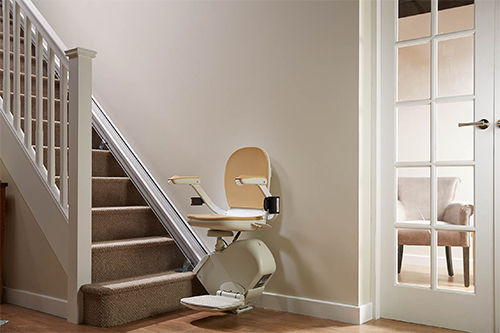
Life sometimes throws a curveball. When things unexpectedly change, especially regarding your health or mobility, it can be challenging to accept. Luckily in this day and age, with advanced technology—helpful advancements aid people every day in and outside of their own homes. Whether someone has disabilities or other difficulties, scientific innovations have enabled individuals to have more accessibility and live independently.
Assistive technologies in the home can be impactful and positively change some people's quality of life. Unfortunately, there can be negative stereotypes of what using these technologies means. Changing the negative stigma associated with home aids begins at home and can alter how you associate them.
Stigma is characterized by (a) negatively perceived attribute(s). Stigmatization can be associated with social penalties or social perceptions. More often than not, people focus on what issues a disability can cause or the general perception of disability. But people living with disabilities are so much more than any generalization or perceived notion. Disability directly affects many more individuals than most people realize. According to the World Health Organization (WHO), there could be more than one billion people worldwide who are disabled, stating that "disability is part of the human condition." While other people's views can be challenging, disabilities are part of what makes humans special. Embracing difference has the potential to transform the lives of millions of people.
Safety rails, ramps leading to homes, and hearing aids are all examples of home assistive technologies. The list could go on for pages, especially when it comes to individual mobility aids. Home lifts, chairlifts, or stairlifts are all great mobility aids. People may not fully understand the importance of going up and down the stairs freely or have difficulties comprehending the significance. Stairlifts can be a valuable asset for increasing users' stability and bringing lifesaving protection to hazardous staircases. Many people can recover their freedom and become more mobile with the aid of stairlifts.
Taking the time to talk about what a home assistive device can bring to your household is meaningful. If you are struggling in your home, social stresses need not prevent you from making a better life for yourself or a loved one. Breaking down the stigma of using helpful aids impacts the ability to have accessibility. When you break down those barriers, individuals can increase their capabilities and get the help they truly need to live their best lives.
Below you will find some helpful ways to encourage those around you to seek assistance:
- Utilize person-first language. When making reference to individuals with challenges or coping with disabilities, use affirmative phrases. For example, refer to someone hard of hearing or a person who uses a wheelchair. When interacting with someone directly, though, they may prefer to be referred to differently.
- Maintain a positive attitude during conversations. You can do this by supporting and speaking kind words about their choices to create changes for better overall safety and health.
- Be receptive to new thoughts and people. Surround yourself with people from a multitude of backgrounds. To achieve a more optimistic view on your health, practice inclusiveness while seeking new understanding from others.
- Participate in support groups. While everybody is special in their own way, it may be beneficial to find common ground with similar people. Consult a health provider or look online to locate a group near you.
Acorn Stairlifts understands the importance of your wellbeing and safety. Installing a stairlift in your home can significantly improve your mobility and set your mind at ease. Completing an assistive home improvement can be a complicated process, but when it comes to making tough choices, Acorn is there to help.
Sources:
Parette, Phil & Scherer, Marcia. (2004). Assistive technology use and stigma. Education and Training in Developmental Disabilities. 39. 217-226.
World Health Organization. World Report on Disability. Available online: http://www.who.int/disabilities/ world_report/2011/en/

